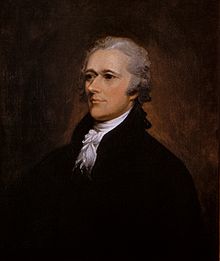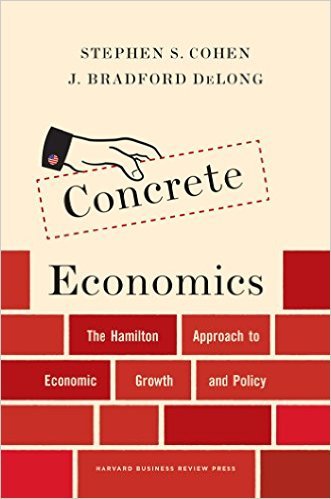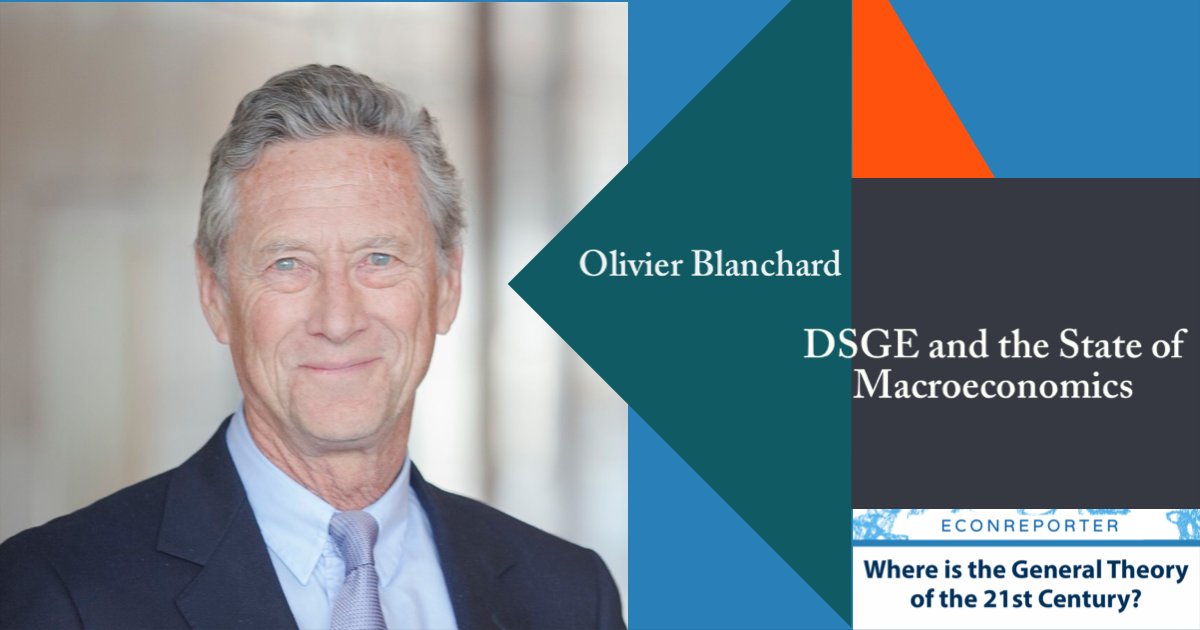Last Updated:
Prof. Brad Delong’s blogs, either “bradford-delong.com” or over at “ Equitable Growth” , are definitely two of the most influential economics blogs in the blogosphere, and I read both of them daily. More than often, however, I found my economics ideology differ vastly with that of Delong’s. What keeps me reading his blog daily, is Delong’s often detailed explanations on economics, and beyond doubts, they are absolutely fascinating for economics learners of all levels.
In the latest book “Concrete Economics: The Hamilton Approach to Economic Growth and Policy” (to be published on 9th Feb 2016), Prof.Delong, together with Prof. Stephen Cohen, successfully challenged my very own economics views once again.
The authors argue that the Financial Crisis and the declining trend of the U.S. economy predated the crisis, was largely due to the fact that U.S. government and economics academia focused too much on ideological arguments for and against certain economic policies. Academics and Policymakers no longer guide the economy with “concrete thinking and planning”.
Without directly pointing the finger, readers can easily understand that the authors are blaming the Free-market-ism and the Chicago School, for guiding the economy only with vague principles, rather than visions and evidence.
As a supporter of Friedman’s vision of free market, I find this book still fascinating. The authors argued that Alexander Hamilton, Founding Father of the United States, chief staff aide to General George Washington, and most importantly the first Secretary of the Treasury of the United States; as one of the examples of how concrete and visionary economic plannings could indeed be a better guiding principle for building a wealthy nation.

The authors emphasized it is the vision of economic leaders, together with appropriate regulations and the understanding of the economies’ need, rather than pure ideologies, should be the key to economic developments.
But one thing we have to be clear, the authors are not arguing for communism or any other form of dictatorships. Rather, the authors are arguing for no guiding economic ideology at all.
This is why I enjoyed reading “Concrete Economics”, even the author’s advocacy position on using an excessive tariff to protect local industries development is rather too strong for my own taste.
This is a book which Free Market Supporters should read, as this book let readers understand what concrete economic planning achieved. Also, Delong and Cohen’s arguments provided Free-marketer a foundation for more thorough thinking on why and when free market methods work best, and why mere Free Market ideology alone can’t result from successful economic developments.
The Concrete Economics based on this very premise:
“Yes, there was an ‘invisible hand’ and enormous entrepreneurial innovation and energy. But The Invisible hand was repeated;y lifted at the elbow by the government and replaced in a new position from where it could go on perform its magic.”
The authors argue, it was Hamilton’s tariff protection for infant manufacturing industry against more competitive English producers, e.g. 25 percent in 1816, that help United States industries a breathing space to develop. And it was U.S. government’s initiative to build transcontinental railroads that opened vast opportunities for profitable farming and settlement, and the developments of steel industries.
It was also Franklin Roosevelt’s pragmatic experimentalism, putting out the New Deal in the climax of the Great Depression, that redesigned the U.S. economy and opened economic space for future growth. Though it was originally an economic stimulus, the New Deal found its way into every corner of U.S. economy, from farm to bridge, to stock exchanges and bank, to social insurances, and turn itself into the foundation of postwar U.S. economy. As the authors put it, ” Through the New Deal was not itself ideological but rather ultimate in pragmatic policy experimentation, it became the definition of ideology that was post-World War II American liberalism: The regulation of finance, social safety net, mortgage insurance, high marginal tax rate, and big active government. It became the model of what government could do and should do.”
The most interesting argument in the book is the author’s analysis on how East Asian Economies, i.e. Japan, Korea and China etc, took the Hamilton-style economic planning, using deliberately low exchange rates, tariff, and subsidies to protect local industries from international competitions. At the same time, adopters of this “East Asian Model” take advantage of the globalization, selling their manufacturers to all around the world to help local industries grow even faster.
And what did U.S. do amid the rise of the East Asian model? U.S. inclined to growth “high-value-added industries”, like Financial Services. By embracing deregulation of the finance industry, finance grows tremendously as its share in U.S. economy grew rapidly. The result is excessive lending that eventually led to The Great Recession of 2008, and the rise of East Asian economic power. As the authors read it, U.S. just gave away part of its economic supremacy to the East Asia, for nothing in return.
Is this the correct analysis of the whole post-1980s world economic situation? Arguable. But the comparison between Hamilton style development strategy and the post-1980s U.S. economic development is striking. This makes me wonder, why U.S. had chosen the path it took…








